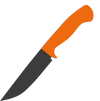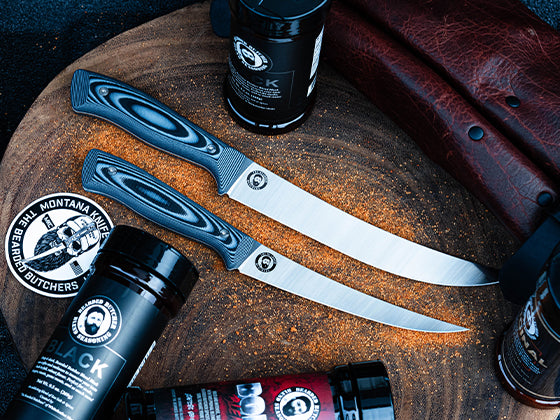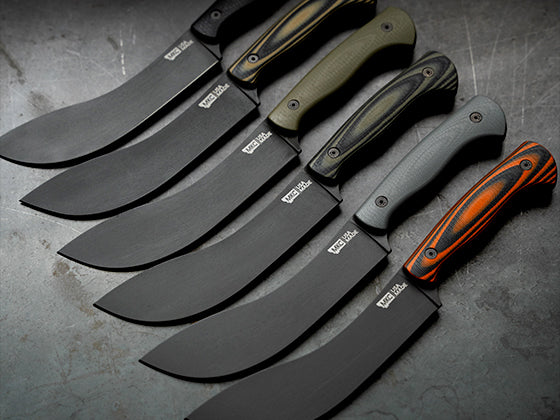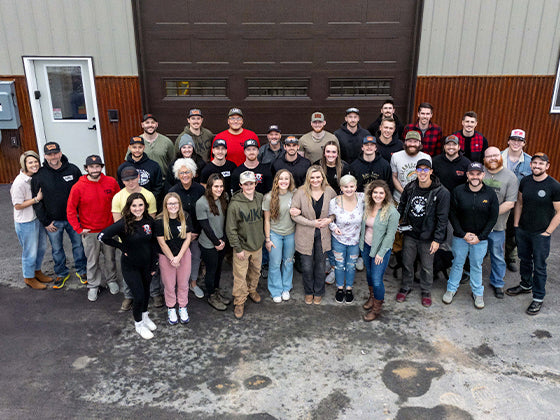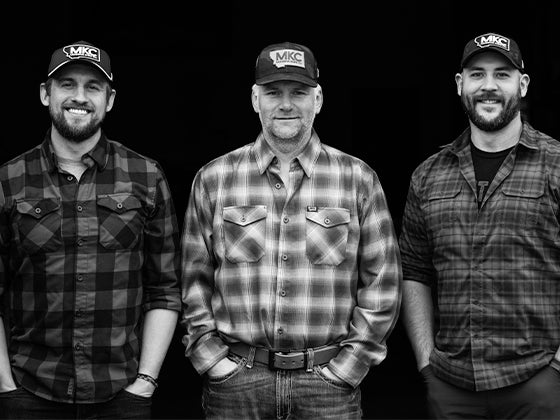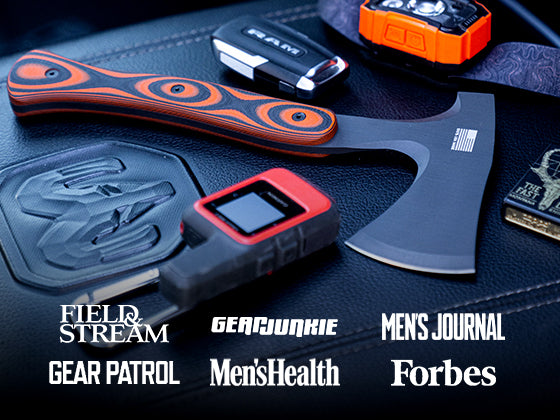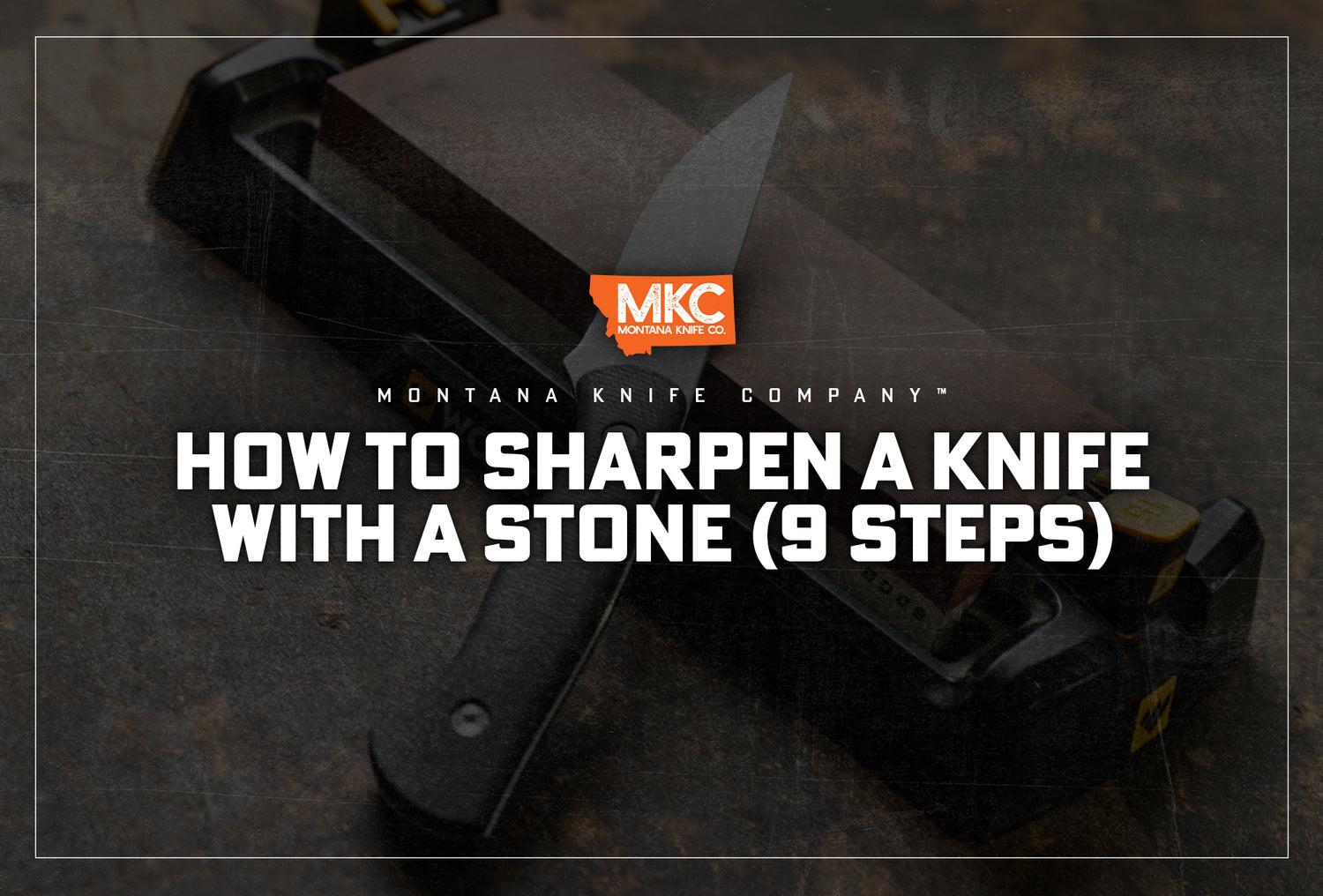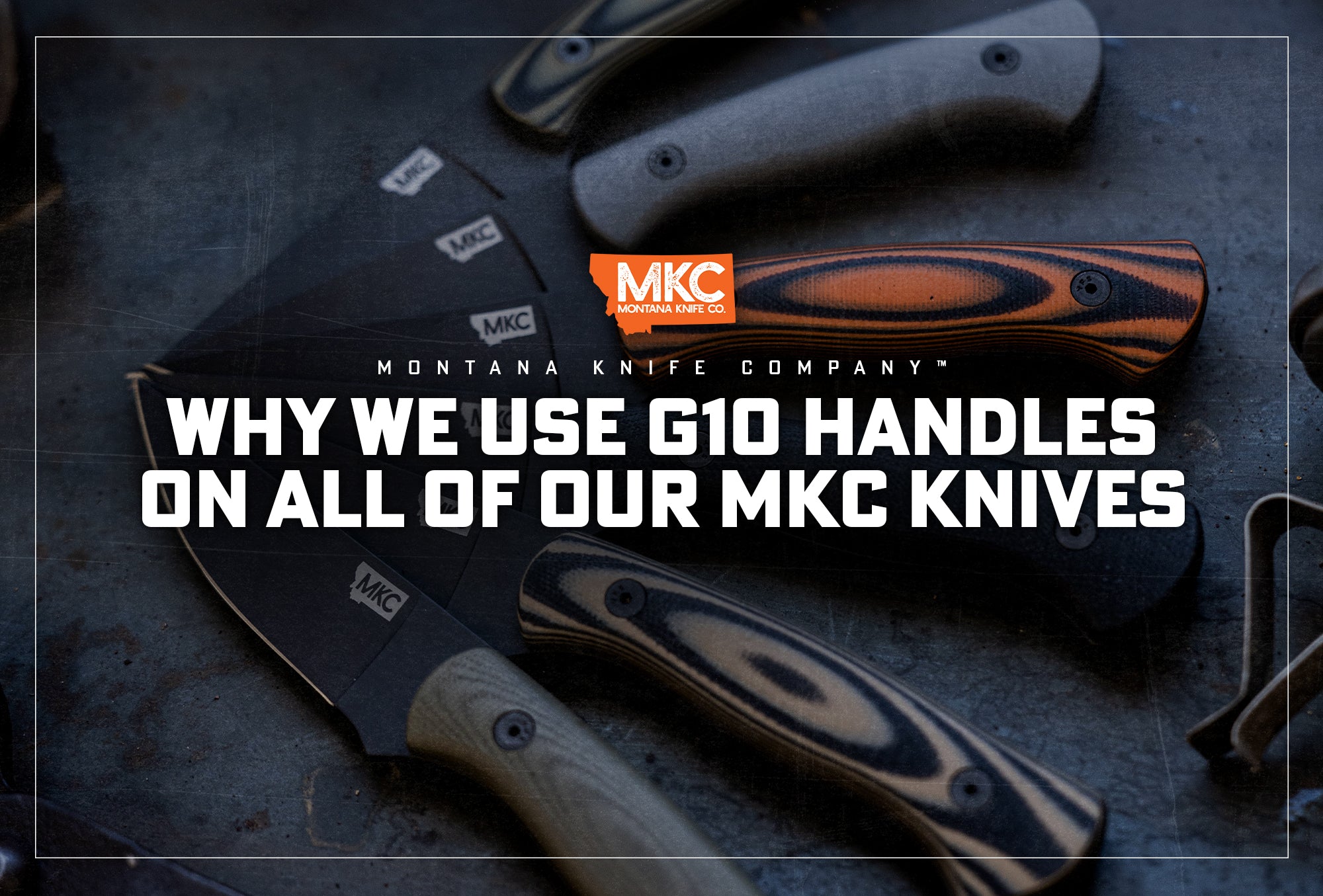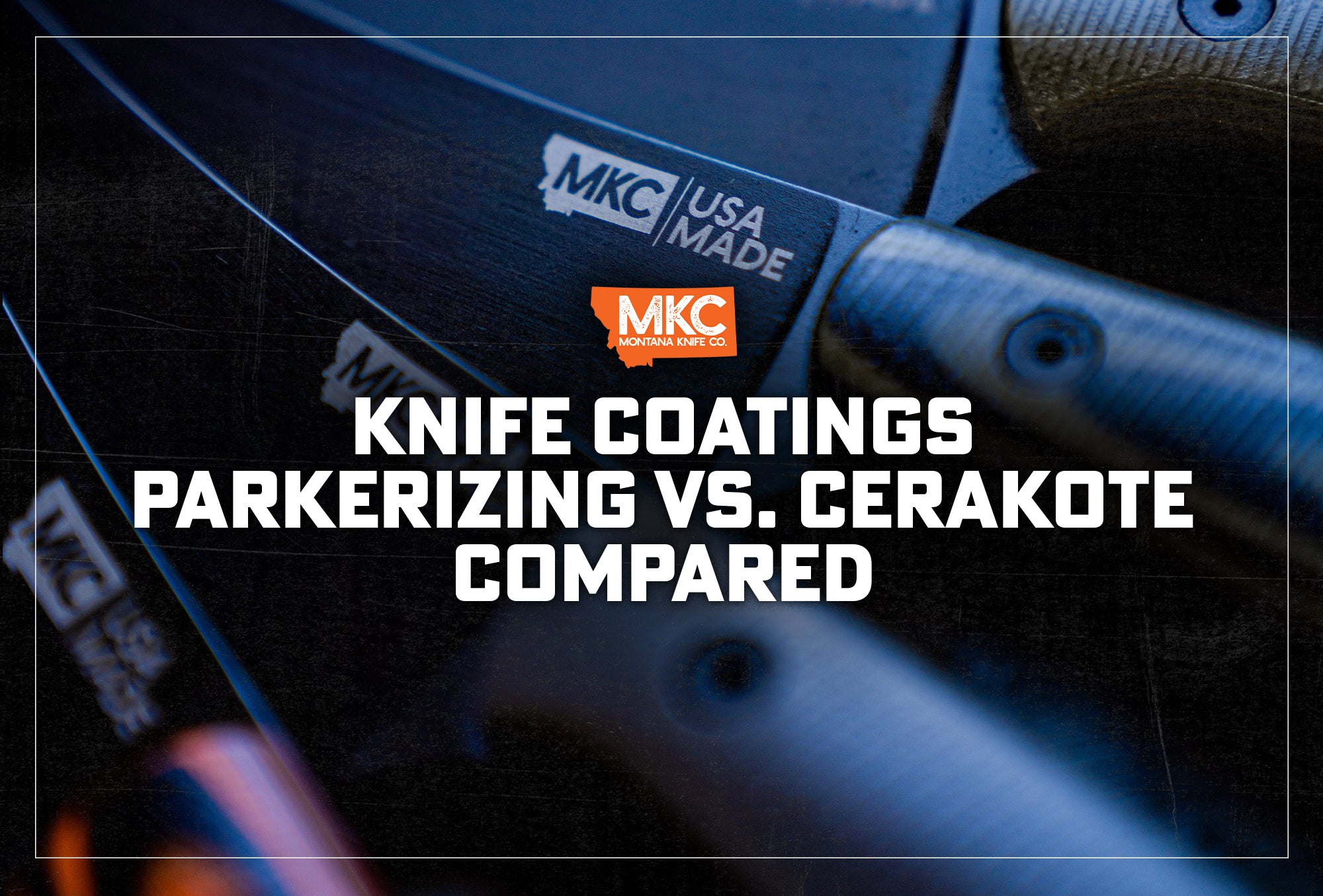The number one question I have been asked as a knife maker — for decades now — is how to sharpen a knife.
I can’t tell you how many times I’ve heard someone say, "I’m so bad at sharpening knives!" or, "I don’t know how to sharpen a knife!"
But I have to be honest with you: if you’re struggling to sharpen a knife, it may not necessarily be you or your skills that are lacking. It might be the knife itself that’s the problem.
Take edge geometry, for example. When you feel the edge from the top of the spine downward, you might notice a lot of thickness or heaviness behind the edge. That much steel will get in the way when sharpening.
Also consider the hardness and type of alloy of the steel. Let’s say it’s 67 HRC on the Rockwell scale — an extremely brittle level of hardness. To keep the blade from breaking, the manufacturer will have to have made it really thick, meaning that blade will resist sharpening on a stone.
Edge geometry, steel hardness, and heat treating may be out of your control, but what you can control is the type of knife you choose.
That’s why our blades are so popular. I make our blades with thinner edge geometry, and I use the right type of steel. And yet, I know every single knife that’s ever been made is going to go dull, including ours. In that case, send it back to us — we’ll resharpen it for free through our Generations program.
But the real question is, can you resharpen it while you’re out in the field? Can you get that edge back with a quick touch up? I want you to be able to resharpen your blades to keep going in the field, and that comes down to whether you know how to sharpen a knife with a stone.

1. Select the Right Stone
We discussed this in detail in another post, but I do want to point out that the stone I use is generally 600–1000 grit. This is a great range for hunting knives as well as chef’s knives.
That said, if your knife is in really bad condition, you might need to start it on a stone somewhere between 220–400 grit, then finish it on a finer stone.
2. Determine the Direction
When I sharpen a knife, I start out at the top corner of the stone and move in what many would consider a “backward” direction, which is to say moving the blade across the stone away from the edge.
There’s a good reason why. If I were to go “forward” — leading with the edge and traveling from the base of the blade to the tip — I would, over time, end up with a rounded tip rather than a nice, pointed one.
The edge of the blade is its thinnest part. So, because sharpening removes steel, you will remove more steel more quickly at the edge and tip than you will at the back of the blade, where there’s more steel.
Working backwards will also give you more control over the sharpening process. If I want to stand the blade up and really get on the tip, I can do so with more control. Or, I can rock the blade down and stay off the tip entirely and focus on spots that need more attention.
3. Determine the Angle
If how to sharpen a knife is the question I get asked most often, at what angle to sharpen it is number two.
Frankly, I think people get a little too consumed with the angle. I generally tell people it’s between 15 and 20 degrees.
The more slight of an angle you have, the more easily the knife will pass through material. But it also means less steel is behind the edge, which is important if you plan to do aggressive work like chopping wood or pounding through knots.
When you increase that angle, say to 20 degrees, you create more of a wedge. Come all the way up to 45 degrees, and you’re at the angle of an ax or a maul. The more wedge shape you have, the harder it will be for that blade to stay sharp and pass through material.
I always tell people to shoot for 17 degrees — but honestly, if you’re anywhere between 15 and 20, you can’t go wrong.
If you’re in the market for a stone, Work Sharp stones have handy degree pieces that can be inserted. So, if you want to sharpen your blade at 15 degrees, you can insert a 15-degree piece and lay your blade to see what 15 degrees actually looks like rather than having to guess.
I recommend using these when you’re just starting out. Eyeballing angles will come with practice and experience.
4. Maintain the Condition of the Stone As You Work
The stone I generally work with is a whetstone, which is designed to be lubricated with water.
Before I begin, I drop a bit of water on the stone to help it work better. Once in a while, I’ll wipe it down with a rag and add more. A clean, fresh stone cuts better and is more aggressive.
5. Work One Side To Get a Burr
When sharpening a knife, it’s important to work on one side heavily. The number one thing to remember is that you’re trying to get a burr. A burr is a curved lip of metal that raises up along the opposite side of the blade as you’re moving the knife back and forth across the whetstone.
As you sharpen one side, feel with your fingers on the opposite side (the side facing you). What you should feel is a burr that is not in contact with the stone. What’s happening is, as you cross the stone, you’re cutting across the edge, rolling the steel up on the opposite side. That tells you where you have and haven’t made contact.
Let’s say you use a certain part of the edge over and over, but other parts don’t see that much action. Well, in your first few passes over the stone, you might feel a burr on the part of the edge that isn’t used much, but the part that sees a lot of action will need more attention. Go back to the stone, back to that spot, until you feel a uniform burr all the way down the length to the edge.
6. Work the Other Side
It’s time to flip the knife and repeat the process. Work the edge in the same way until a burr rolls up on the other side. Feel for the burr all the way down the edge and go back to the stone to address the areas that need more work.
We’re not trying to feel if the knife is sharp yet; we’re just looking to see if we’re making contact with the full length of the edge.
Once we’ve established the burr on the other side, it’s time to refine the size of it and align it with the center of the knife. If you were to look under a magnifying glass, the burr will appear heavily rolled on one side of the edge, with aggressive, heavy saw teeth. The next step is to bring those teeth back to the center.
7. Work Both Sides to Center the Edge
Now that both sides have made good contact with the stone and we have a good burr, it’s time to bring those teeth back to the center and reduce their size. The way we do that is by alternating sides, back and forth with fairly firm pressure.
As the teeth line up with the center, we can gradually lighten our pressure.
8. Refine the Edge
After you finish with the stone, you’ll likely feel the teeth of a tiny burr on the side that took the last little stroke. The knife will feel pretty sharp and, if you stop right here, it will work just fine.
But ideally, you would move to the next step, which is to refine the edge further using a leather strop. Here, you’ll notice that, even though we took our last couple super light passes over the stone, the edge rolled over to one side just a little bit. The strop will show scratches from the teeth on that side, which you’ll need to work just a little bit harder.
It’s best to alternate sides on the strop, at the same angle and in the same direction, to really align and refine the edge until no more scratches appear. Running the blade over the strop will not only align the wire edge to the center of the blade, it will also remove any loose particles along the edge.
9. Test the Blade
A sheet of paper is a good piece of test material to see how well your blade can cut. Hold it up and slice through it from top to bottom with your knife.
Does it run through beautifully? Or does any section of the blade get hung up? If so, the blade might need a bit more work on the stone or strop. A few light passes ought to do the trick, and your knife should be as good as new.
by Josh Smith, Master Bladesmith and Founder of Montana Knife Company














